All News














Last July, an Institute of Medicine (IOM) report estimated that, on average, a hospital patient is subject to at least one medication error per day, although error rates vary by hospital and most do not lead to injury. The report urged the Food & Drug Administration to work with other agencies and healthcare providers to address drug labeling and packaging to minimize errors. In response to this recommendation, the FDA held a one-day public workshop last month to discuss how to improve the labeling of intravenous drug containers.


Independent and chain drugstore pharmacists have had to address a significant number of new issues during 2006, such as the launching of the Medicare Part D program and new demands on their professional time to assist customers. Perhaps the single most pressing issue facing R.Ph.s, however, is reimbursement. No other issue ignites more debate than how an insurance plan, government program, or patient reimburses pharmacists for their products/services. A growing number of pharmacies across the country are falling into debt, laying off workers, and facing closure due to inadequate reimbursement levels and slow payment. This article summarizes the reimbursement plight pharmacists find themselves in and reviews three attempts under way to help resolve this issue.

The House of Representatives recently passed a measure to increase the federal minimum wage to $7.25 an hour from its current rate of $5.15 an hour over a 26-month period. The Senate is expected to move swiftly to pass a similar measure. How will the hike affect chain and independent pharmacies?

The Food & Drug Administration recently proposed regulatory changes to make investigational drugs more widely and easily available to seriously ill patients with no other treatment options. The proposal also clarifies the circumstances and the costs for which a pharmaceutical company can charge for developmental drugs. The proposed regulations were published in the Dec. 14 issue of the Federal Register. They are described in detail at http://www.fda.gov/cder/regulatory/applications/IND_PR.htm and are open for comment for 90 days.

State legislators have emerged as key players in pharmacy. Faced with shrinking margins from Medicare Part D and the specter of bankruptcy from proposed Medicaid reimbursement rates, many pharmacists are pushing their state legislatures to shift the balance.

Like it or not, health-system pharmacies are under tremendous pressure to perform at a high level. Addressing patient safety concerns, improving outcomes, implementing state-of-the-art technology, and keeping drug costs down requires a juggling act that pharmacists must perform on a daily basis.

NIOSH, the National Institute for Occupational Safety and Health, is updating its list of hazardous pharmaceutical products. The new list will become part of the organization's 2004 alert, Preventing Occupational Exposure to Antineoplastic and Other Hazardous Drugs in Health Care Settings.

When Michelle Rutledge, Pharm.D., heard about the fatal shooting of a hospital pharmacist at Shands Jacksonville hospital in Florida last November, it really hit home. The victim, 37-year-old Shannon McCants, was a fellow graduate of the Florida A&M College of Pharmacy. McCants was shot by a customer who was waiting for a prescription to be filled in the outpatient pharmacy. Rutledge, an associate investigator at the James A. Haley VA Hospital in Tampa, said that e-mails from former student-colleagues began pouring in.

It seems to me that doctors are pretty much taking off the better-than-you crowns and the are-you-looking-at-me cloaks these days. They seem to be much more egalitarian than ever before. They often appear to be more democratic than they were just 10 years ago. I can even call them by their first names without getting attitude. When I question them on restricted refills on something like Freestyle strips, they are likely to back off and change to p.r.n. Doctors are getting human on us.

Medicare Part D has gone a long way toward closing an important gap in healthcare coverage by providing a prescription drug benefit to enrollees. Now several government agencies are aiming to close the gap between the availability and use of covered preventive services among persons with Medicare. The goal is to do more to help beneficiaries manage their medical care rather than just paying the bills.

Now Type 2 diabetics will have another option for controlling blood glucose. Exenatide (Byetta, Amylin Pharmaceuticals) injection can now be used as add-on therapy in patients who have not achieved adequate blood glucose control on a thiazolidinedione (TZD). The drug was approved by the Food & Drug Administration for expanded combination use in December.

Pharmacists can now refer to a new treatment algorithm for the metabolic management of Type 2 diabetes when caring for patients. This is one new addition to the Standards of Medical Care in Diabetes-2007 from the American Diabetes Association (ADA). The clinical practice guidelines have been updated to include new information about treatment and prevention that reflects the latest research.

As many as one in five Americans, or 55 million people, suffer with the abdominal discomfort associated with irritable bowel syndrome (IBS), according to the National Institute of Diabetes and Digestive and Kidney Diseases (NIDDK). Symptoms vary from patient to patient but typically include abdominal pain and discomfort with changes in bowel function-either predominantly diarrhea (IBS-d) or constipation (IBS-c). Some patients, however, experience a mixed form (IBS-m), with alternating diarrhea and constipation. Currently there exist few therapies for treating the condition; however, several entities in development look promising.

Two commonly prescribed antihypertensive medications have now been combined into one tablet. With an anticipated availability this September, valsartan (Diovan, Novartis) and amlodipine (Norvasc, Pfizer) will be sold as a combination product under the trade name Exforge (Novartis). The Food & Drug Administration approval is tentative, pending expiration of market exclusivity and patent protection for amlodipine in September.

According to the FDA Web site (www.fda.gov), 18 new molecular entities (NMEs) were approved in 2006, the lowest number to be given the nod by the agency since 2002 when only 17 drugs were approved.



